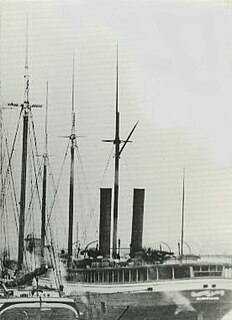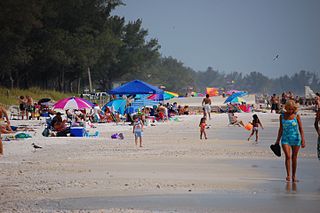
Maritime archaeology is a discipline within archaeology as a whole that specifically studies human interaction with the sea, lakes and rivers through the study of associated physical remains, be they vessels, shore-side facilities, port-related structures, cargoes, human remains and submerged landscapes. A specialty within maritime archaeology is nautical archaeology, which studies ship construction and use.

A shipwreck is the remains of a ship that has wrecked, which are found either beached on land or sunken to the bottom of a body of water. Shipwrecking may be deliberate or accidental. In January 1999, Angela Croome estimated that there have been about three million shipwrecks worldwide.

Wreck diving is recreational diving where the wreckage of ships, aircraft and other artificial structures are explored. Although most wreck dive sites are at shipwrecks, there is an increasing trend to scuttle retired ships to create artificial reef sites. Diving to crashed aircraft can also be considered wreck diving. The recreation of wreck diving makes no distinction as to how the vessel ended up on the bottom.

USS Narcissus — a screw steamer launched in July 1863 as Mary Cook at East Albany, N.Y. — was purchased by the Union Navy at New York City on 23 September 1863 from James D. Stevenson; and commissioned at New York Navy Yard on 2 February 1864, Acting Ensign William G. Jones in command.

The Lofthus is a Norwegian shipwreck near Boynton Beach, Florida, United States. Built in 1868 in Sunderland, England, the iron-hulled vessel was originally christened Cashmere and rigged as a three masted barque. After a career in the East Indian trade Cashmere was sold to a Norwegian firm, renamed Lofthus, and used in the American trade. It is located three-quarters of a mile north of Boynton Inlet, 175 yards offshore from Manalapan. On January 6, 2004, it was added to the U.S. National Register of Historic Places. It also became the eighth Florida Underwater Archaeological Preserve the same year.

SS Tarpon was a ship which sank in 1937 near Panama City, Florida, United States. The shipwreck is located 7.8 nautical miles (14.4 km) off the shore of Panama City. It became the sixth Florida Underwater Archaeological Preserve when it was dedicated in 1997. In May 2001, it was added to the U.S. National Register of Historic Places.

The Half Moon was a racing sailboat; it sank in 1930 near Miami, Florida, United States. The wreck is outside Bear Cut, which separates Virginia Key from Key Biscayne. Christened Germania, the racing yacht featured a chrome-nickel steel hull built by Krupp-Germania-Werft in 1908 in Kiel, Germany. During a visit to England in 1914, the yacht was seized as a 'war prize'. After changing owners several times, and surviving an especially-violent storm off Virginia, the yacht became a floating restaurant and dance hall off Miami. It sank near near Key Biscayne in 1930. In 2000, the wreck became the seventh Florida Underwater Archaeological Preserve. In 2001, it was added to the US National Register of Historic Places.

The Vamar is a shipwreck near Mexico Beach, Florida, United States. It is located 3.7 miles offshore from Mexico Beach. It became the ninth Florida Underwater Archaeological Preserve when it was dedicated in 2004. On April 10, 2006, it was added to the U.S. National Register of Historic Places.

The SS Regina was a steel canaler built for the Merchant Mutual Line and home ported in Montreal, Quebec. Named after Regina, Saskatchewan, Regina had a tonnage of 1,956 gross register tons (GRT) and a crew of 32.

The Whitefish Point Underwater Preserve was established in 1987 to protect and conserve shipwrecks and historical resources on 376 square miles (970 km2) of Lake Superior bottomlands in Whitefish Bay and around Whitefish Point, Michigan. The formation of the Michigan Underwater Preserves helped stop controversy over artifact removal from shipwrecks of this area. The preserve is now known for deep, well preserved shipwrecks in clear water accessible to scuba divers with technical skill and experience. The preserve is one of the last places in the Great Lakes to observe shipwrecks without zebra mussel encrustation.

SS Comet was a steamship that operated on the Great Lakes. Comet was built in 1857 as a wooden-hulled propeller-driven cargo vessel that was soon adapted to carry passengers. She suffered a series of maritime accidents prior to her final sinking in 1875 causing the loss of ten lives. She became known as the only treasure ship of Lake Superior because she carried 70 tons of Montana silver ore when she sank. The first attempts to salvage her cargo in 1876 and 1938 were unsuccessful. Comet was finally salvaged in the 1980s when the Great Lakes Shipwreck Historical Society illegally removed artifacts from the wreck. The artifacts are now the property of the State of Michigan and are on display as a loan to the Great Lakes Shipwreck Museum. The fate of her silver ore cargo is unknown. Comet's wreck is now protected by the Whitefish Point Underwater Preserve as part of an underwater museum.

The SS Samuel Mather (1887) was the first of seven U.S. merchant ships to bear that name. The wooden Mather sank in 1891 after she was rammed by the steel freighter Brazil in heavy fog in Whitefish Bay 8 miles (13 km) from Point Iroquois, ending the Mather's 4-year career. Her intact wreck is a rare of example of wooden freighters that plied the Great Lakes and she is a popular scuba diving site. Although there was no loss of life when the Mather sank, her wreck claimed the lives of three scuba divers more than 100 years after she sank. Artifacts from her wreck were illegally removed in the 1980s by the Great Lakes Shipwreck Historical Society. The artifacts are now the property of the State of Michigan and are on display as a loan to the Great Lakes Shipwreck Museum. The wreck of the Mather is protected as part of an underwater museum in the Whitefish Point Underwater Preserve.

The SS John B. Cowle (1902) was one of the early Great Lakes bulk freighters known as "tin pans". She was the first of two ships named for prominent Cleveland, Ohio citizen and shipbuilder, John Beswick Cowle. On her maiden voyage in 1909, the Isaac M. Scott rammed the Cowle in heavy fog off Whitefish Point. The Cowle sank in 3 minutes, taking 14 of her 24-man crew with her. Artifacts from her wreck were illegally removed in the 1980s. Her artifacts are now the property of the State of Michigan and are on display as a loan to the Great Lakes Shipwreck Museum. The wreck of the Cowle is protected as part of an underwater museum in the Whitefish Point Underwater Preserve.

SS Cedarville was a bulk carrier that carried limestone on the Great Lakes in the mid-20th century until it sank after a collision with another ship, MVTopdalsfjord.

The Miztec was built as a 3-masted schooner in 1890. She was later converted to a schooner barge and served as a consort for lumber hookers on the Great Lakes. She escaped destruction in a severe 1919 storm that sank her longtime companion, the SS Myron, only to sink on the traditional day of bad luck, Friday the 13th, 1921, with the loss of all hands. She came to rest on Lake Superior's bottom off Whitefish Point near the Myron.
Save Ontario Shipwrecks (SOS) is a Provincial Heritage Organization in Ontario, Canada. SOS is a public charitable organization which operates through Local Chapter Committees supported by a Provincial Board of Directors and Provincial Executive.

The SS Charles S. Price was a steel hulled ship lost on Lake Huron on November 9, 1913 during the Great Lakes storm of 1913.
The following index is provided as an overview of and topical guide to recreational dive sites:

Recreational dive sites – Specific places that recreational divers go to enjoy the underwater environment or are used for training purposes

















